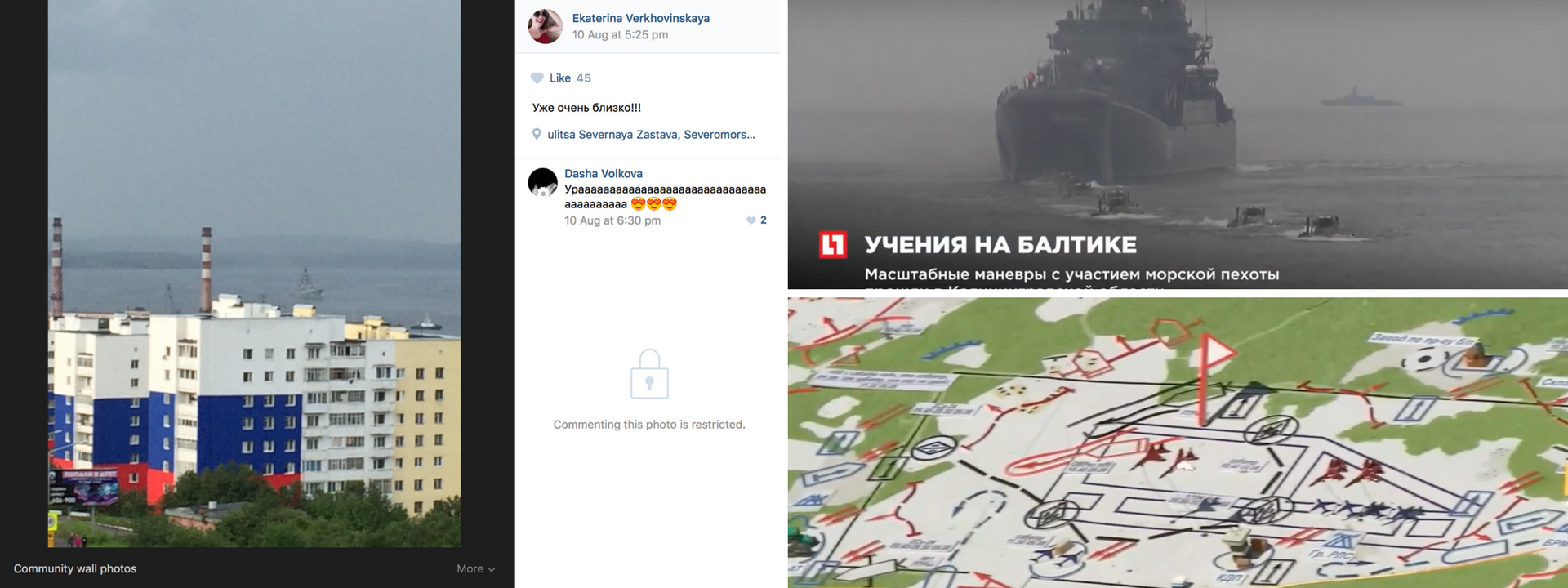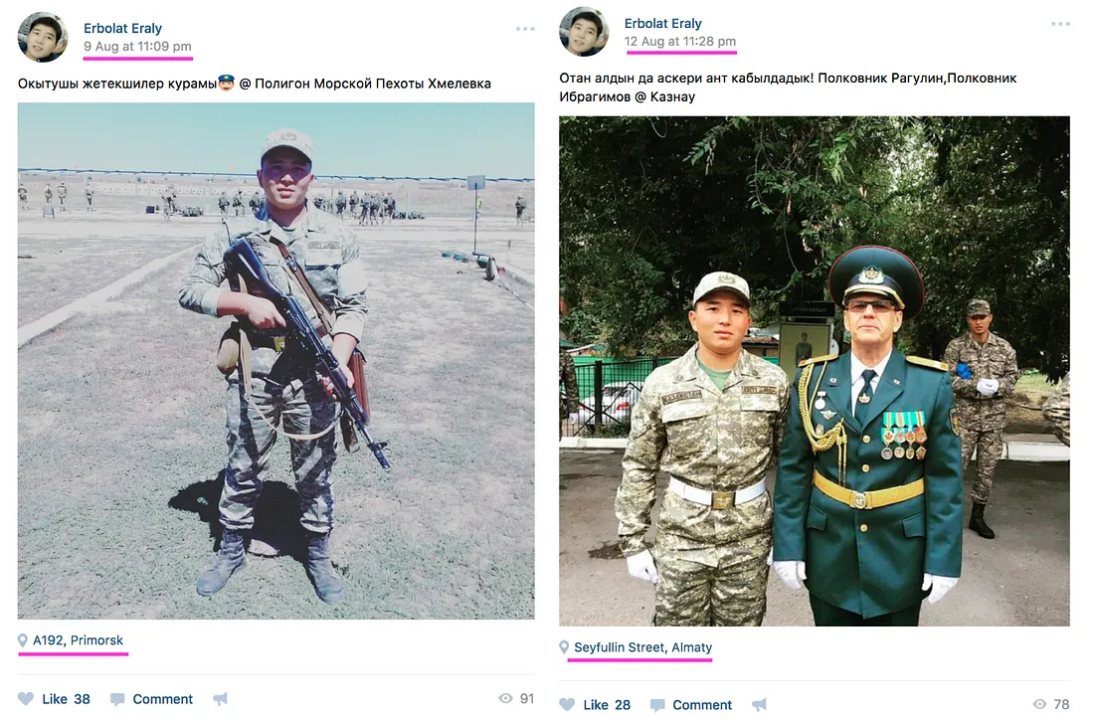#ZapadWatch: Russian Snap Drills Close to NATO Borders
Late, sparse, and inaccurate info from the Ministry of Defense raises concerns for the upcoming Zapad 2017
#ZapadWatch: Russian Snap Drills Close to NATO Borders
Share this story

During the week of August 7, Russia carried out three large-scale exercises close to NATO borders. One of them — a naval exercise — was carried out in preparation for the Russian-Belarusian joint military exercise Zapad 2017.
The Russian Ministry of Defense (MoD) announced all the exercises at the last minute — in some cases, even after the mainstream media had already reported about them. According to Finnish security and foreign policy analyst Petri Mäkelä, such sudden exercises, or “snap drills,” are a common tactic to cover up a military buildup.
What do open sources tell us about the recent snap drills?
Special Navy exercise in preparation for Zapad 2017
The most direct link between one of the three exercises and Zapad 2017 was made on August 8, when a First Rank Captain in the Russian Northern Fleet, Vadim Serga, told Russian news agency Interfax about “a special exercise involving various types of support for naval forces.” He mentioned that about 50 ships, submarines, and provision vessels, together with planes and helicopters, would be used during the exercise. The Interfax piece concluded with the following statement.
The special exercise involving various types of support for naval forces is a preparatory stage of the joint strategic exercise Zapad 2017, and is aimed at preparing military command, forces, and the fleet for forthcoming operational and combat training activities.
A few hours later, the Russian MoD published on its webpage a more elaborate article on the special exercise. The article mostly used the same wording as the article published by Interfax, but added two paragraphs:
The added paragraphs read:
In the first stage of the exercise, a set of measures for anti-subversion / sabotage defense of the naval base will be worked out, during which the anti-subversion / sabotage defense duty forces will counteract opposing force “saboteurs” trying to penetrate the fleet’s waters.
Then, in accordance with an overarching plan, mine-and-ground forces, ship formations, aviation, and search-and-rescue forces will operate.
The next day, on August 9, the Russian MoD reported on the first phase of the exercise. The end of the article stated that the exercise had lasted since August 7.
The naval base of the Russian Northern Fleet is located in Severomorsk, in northern Russia.
Nukes return north
Meanwhile, on August 7, Russian Army media outlet Zvezda TV reported that the heavy nuclear missile cruiser Pyotr Veliky, the missile cruiser Marshal Ustinov, and the heavy nuclear strategic missile submarine cruiser Dmitry Donskoy had left the Baltic Sea and entered the North Sea, heading for their home port. The home port of the Pyotr Veliky and the Marshal Ustinov is Severomorsk.
An image posted on August 10 in a public VKontakte (VK) group for the Pyotr Veliky shows two ships close to the coast of Severomorsk. The post, by VK user Ekaterina Verkhovinskaya, reads: “Already very close!!!”:

On August 11, Zvezda TV reported that the Pyotr Veliky, the Marshal Ustinov, and the Dmitry Donskoy had returned to their home port in Severomorsk.
The quality of the image posted by Ekaterina Verkhovinskaya does not allow for a firm visual confirmation of the Pyotr Veliky. However, on August 11, VK user Nikita Lyzhenkov posted an image of a sunrise geotagged in the port of Severomorsk, the supposed location of the Pyotr Veliky. Earlier, on June 11, the same VK user posted an image with the text “TARK Pyotr Veliky.” The expanded version of the abbreviation is Tezholij Atomniy Raketniy Kreiser (Тяжелый атомный ракетный крейсер), which translates as “Heavy Nuclear Missile Cruiser.”

On July 25, Nikita Lyzhenkov posted a gallery of images all depicting the same sunrise. The post notes that the images were taken on the Baltic Sea, where the Pyotr Veliky was located at that time in order to participate in the Navy Day Parade in St. Petersburg.

This evidence indicates that the heavy nuclear missile cruiser Pyotr Veliky has been in the port of Severomorsk since August 11, a few days after the special exercise on the various types of support for Russian naval forces began.
Large-scale offensive drill in Kaliningrad
Also on August 7, a local media outlet in Kaliningrad reported on a tactical exercise carried out by a motorized rifle formation of the 11th Army Corps of the Baltic Fleet. The Press Office of the Baltic Fleet mentioned to a correspondent of the media outlet Noviy Kaliningrad that the exercise would involve 700 people and 40 units of military equipment. The article mentioned that the exercise will “continue a few days.”
The movement of armored vehicles associated with the exercise was noticed by VK user Kind Disappearing on August 7. The user’s post reads:
You are driving, not bothering anyone, f**k, an armoured vehicle has appeared. Out of nowhere. @Primorsk, Kaliningrad Oblast, Russia.

The city of Primorsk is located just five kilometers away from the Khmelevka training ground. On August 10, three days after the exercise started, the Russian MoD named this training ground as the location of the exercise. In its release, the ministry reported that units of the Marine Corps Brigade and the 11th Army Corps of the Baltic Fleet had held an exercise at the training ground. Overall, it involved 2,000 people, over 100 units of military equipment, over 20 warships, and 12 planes and helicopters. These numbers significantly exceed those announced before.
Digital evidence found on social media suggests that the Kazakhstan Armed Forces were also present at the exercise. On August 9, VK user Erbolat Eraly posted an image that located him at the Khmelevka training ground. Later, on August 12, he posted another image that located him in the city of Almaty, Kazakhstan.

The public information available on Erbolat Eraly’s VK profile and the geographical references in the images do not identify the particular military unit in which he is serving. The badge above his right breast pocket reads “Kazakhstan.”
According to the report from the Russian MoD, the motorized rifle formation of the 11th Army Corps of the Baltic Fleet played the role of the opposing force. Su-24 bombers and Mi-24 attack helicopters opened fire on the supposed enemy. Then Baltic Fleet special forces and tactical airborne forces captured the firing positions of the motorized rifle formation. Afterwards, engineering units of the Marine Corps landed and cleared land mine passages so the rest of the marines could land. The warships mentioned in the report were used in the last phase of the exercise, to help marines free the coastline from the opposing force.
On August 11, a YouTube channel about Russian military equipment published a video that showed moments from the exercise.
A couple of geotagged images from the exercise were also posted by VK user Vadim Belov on August 10.

Large-scale airborne exercise in Pskov
Still on August 7, Russian news agency TASS reported on an airborne exercise in Pskov Oblast, which borders on two NATO member states, Estonia and Latvia. The report said that the exercise would involve about 2,500 people and 600 units of military equipment, and would last from August 7 to August 11. It gave as its source the Russian MoD Press Office.
On August 7, YouTube user Sergey Rodinov posted a video that shows Mi-8 helicopters taking off from the Kislovo training ground, located 10 kilometers away from Pskov.
@DFRLab has already reported about an earlier Russian airborne exercise in Pskov. Part of that exercise was carried out at the Kislovo training ground. The visual evidence visible in the video posted by Rodinov matches with the visual evidence verified by @DFRLab in the previous report, confirming the area to be the Kislovo training ground.

The video posted by Rodinov shows an observation booth and a stand of trees located side by side. These correspond with the earlier footage.

The evidence above indicates that the exercise started on August 7. Two days later, the Russian MoD published on its webpage a report about the exercise in progress. The report did not specify the number of people or military equipment involved, but mentioned that the exercise involved Su-27 and Su-34 fighter jets. On August 11, Commander of the Troops Colonel-General Andrei Serdyukov announced to TASS that the exercise was over. The article used the same numbers announced earlier.
On August 9, the Russian state-controlled TV channel Perviy Kanal published a story about the airborne exercise.
The reporter in the video explains the exercise scenario:
According to the scenario, Pskov airport has been taken by terrorists. The control tower and runway strip are controlled by the terrorists. Airborne troops start operations to free the airport. […] The coordinates of the terrorist locations are delivered to the command point of the exercise. Now it’s up to the artillery. Two cruise missiles were used to destroy terrorist clusters. To confuse terrorists that have survived, the command of the airborne forces uses fake paratroopers. Tens of paratroopers are landing to divert the terrorists’ attention. While terrorist mobile units are approaching the paratroopers, the core units of our special forces attack from the flanks. After the airfield is freed, airborne forces receive a new command to free nearby villages.
The video goes on to show armored vehicles crossing a river. The reporter identifies the river as the Velikaya River.
The only military airfield located by the Velikaya River in the Pskov area is Veretje, which is located 7 kilometers away from the city of Ostrov.

Conclusion
In the course of a week, Russia managed to carry out significant exercises in both the Pskov and Kaliningrad oblasts. Both areas border NATO countries. The scale of both exercises — 2,000 people and 2,500 people, respectively — is close to what Russia claims will be deployed to Belarus during the Zapad 2017 exercises: 3,000 Russian troops alongside 10,000 Belarusian ones.
The Russian Northern Fleet carried out another exercise during the same week, explicitly in preparation for Zapad 2017. At about the same time, the nuclear-capable missile cruiser Pyotr Veliky arrived back in Severomorsk, the base of Russian Northern Fleet.
All three exercises were reported to Russian journalists once they had started, but the Russian MoD website only confirmed and described the exercises some hours or days later — on one occasion, with a significant difference in the numbers of people and pieces of equipment used. Especially as Zapad 2017 approaches, this confirms the importance of open source and social media analysis to flesh out the sparse information available from official Russian sources.
@DFRLab will continue to monitor and report on developments under the hashtag #Zapadwatch.


